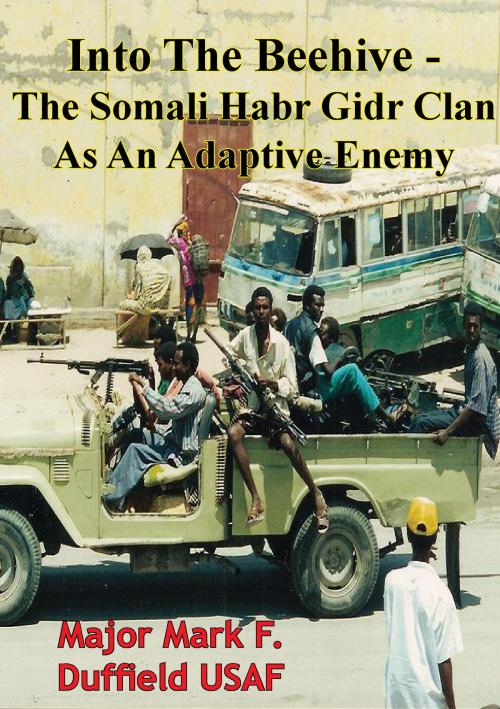Into The Beehive - The Somali Habr Gidr Clan As An Adaptive Enemy
Nonfiction, History, Middle East, Persian Gulf War, Military| Author: | Major Mark F. Duffield USAF | ISBN: | 9781782899723 |
| Publisher: | Tannenberg Publishing | Publication: | November 6, 2015 |
| Imprint: | Tannenberg Publishing | Language: | English |
| Author: | Major Mark F. Duffield USAF |
| ISBN: | 9781782899723 |
| Publisher: | Tannenberg Publishing |
| Publication: | November 6, 2015 |
| Imprint: | Tannenberg Publishing |
| Language: | English |
On October 3rd 1993, US efforts in Somalia culminated as the result of an overnight battle that cost eighteen American lives and effectively silenced all optimism that Somalia could be externally resurrected as a functioning state. What began as a humanitarian mission to abate starvation had evolved into the absurdity of outright combat against the very people meant to be saved. Beyond the issues of political policy, lurks a disturbing fact that remains unaddressed by the US military. Out of the anarchy that was Somalia in 1993—and is like many other places where US forces may be, committed—an untrained, ill-equipped, and undisciplined enemy quickly adapted their tactics, invalidated key US planning assumptions, and evolved into a lethal force. The Habr Gidr’s tactical adaptation outpaced the planning efforts of elite US units and achieved their tactical, operational and strategic goals at US expense.
This monograph explores how this adaptation occurred. It goes beyond the common theories concerning equipment, tactics, and the inherent difficulties of combined operations to look at the very nature of adaptation itself. It provides a different view of events in Somalia in hopes of better informing military planners facing a similar opponent. At its heart, this monograph explores the possibility that what appeared to be little more than an anarchic mob may have been a functioning complex adaptive system.
On October 3rd 1993, US efforts in Somalia culminated as the result of an overnight battle that cost eighteen American lives and effectively silenced all optimism that Somalia could be externally resurrected as a functioning state. What began as a humanitarian mission to abate starvation had evolved into the absurdity of outright combat against the very people meant to be saved. Beyond the issues of political policy, lurks a disturbing fact that remains unaddressed by the US military. Out of the anarchy that was Somalia in 1993—and is like many other places where US forces may be, committed—an untrained, ill-equipped, and undisciplined enemy quickly adapted their tactics, invalidated key US planning assumptions, and evolved into a lethal force. The Habr Gidr’s tactical adaptation outpaced the planning efforts of elite US units and achieved their tactical, operational and strategic goals at US expense.
This monograph explores how this adaptation occurred. It goes beyond the common theories concerning equipment, tactics, and the inherent difficulties of combined operations to look at the very nature of adaptation itself. It provides a different view of events in Somalia in hopes of better informing military planners facing a similar opponent. At its heart, this monograph explores the possibility that what appeared to be little more than an anarchic mob may have been a functioning complex adaptive system.

![Cover of the book Last Flight From Singapore [Illustrated Edition] by Major Mark F. Duffield USAF](https://www.kuoky.com/images/2015/november/300x300/9781786257505-nFT2_300x.jpg)


![Cover of the book Letters On Strategy Vol. I [Illustrated Edition] by Major Mark F. Duffield USAF](https://www.kuoky.com/images/2015/november/300x300/9781786253682-u1uC_300x.jpg)




![Cover of the book U.S. Marines In Battle: Al-Qaim, September 2005-March 2006 [Illustrated Edition] by Major Mark F. Duffield USAF](https://www.kuoky.com/images/2014/august/300x300/9781782896838-V3md_300x.jpg)





